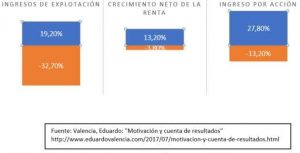
Application of Agile methodologies outside the IT sector.
Agile was conceived for the software world. Due to its extreme uncertainty, failing to adapt quickly to changes could result in the project failing even before its public launch. But if we take a look at the business landscape, we should ask ourselves: what environment is no longer characterized by extreme uncertainty?
The only certainty is change, which is why more and more companies are adopting Agile methodologies in their teams, regardless of their nature. This way, they can teach them to:
- Work as a team.
- Manage change.
- Continuously improve.
- Accept mistakes and learn from them.
- Work in a self-managed way.
These are some examples that allow companies to have motivated employees, and that motivation makes it easier to achieve goals and objectives, and so on.
In a survey conducted with 664,000 workers worldwide, the research firm Industry Standard Research found significant differences between companies with highly engaged employees and those with lower employee engagement:
Influence of employee motivation on the bottom line.

[1] Isson Jean Paul and Harriott Jesse. People Analytics in the Era of Big Data: Changing the Way You Attract [Report]. – 2016.
Agile is based on people. Employees stop being resources and become individuals. Employee motivation is fundamental. People are no longer easily interchangeable parts; they think and have emotions. People generate value, and that value is tangible and can affect the economy and the company’s results.
HR teams are learning the philosophy and values of Agile to convey them throughout their organization because they understand that there is a direct relationship between satisfied employees > satisfied customers > increased profits.
There are a significant number of companies outside the IT sector that have already implemented Agile methodologies and even digital transformation. Within our country, we can mention:

Thus, Agile is easily adaptable to different markets due to its emphasis on people rather than processes. For this reason, it could be incorporated into various companies in any sector to maximize employee and customer satisfaction and performance.


